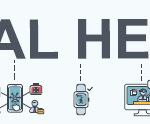Current Procedural Terminology (CPT) codes 99446–99449 were created in 2014 to capture the time spent by a consultant who is not in direct contact with the patient at the time of service. An interprofessional telephone/internet consultation (ITC) is defined as an assessment and management service in which a patient’s treating provider (e.g., primary or qualified health professional [QHP]) requests the opinion and/or treatment advice of a consultant with specific specialty expertise to assist the treating physician/QHP in the diagnosis and/or management of the patient’s problem without the need for the patient’s face-to-face contact with the consultant.
Because the type or severity of the problem is not defined, any condition may qualify for consultative services. However, the codes typically are reported when a new problem arises or a chronic issue is exacerbated or not well managed, and only the consultant can report these codes. In addition, these codes require both verbal and written follow-up reports.
CPT code 99446 is defined as an interprofessional telephone or internet assessment and management service provided by a consultative physician, including a verbal and written report to the patient’s treating/requesting physician or other QHP, and involves 5–10 minutes of medical consultative discussion and review. Related codes include:
- 99447: 11–20 minutes of medical consultative discussion and review;
- 99448: 21–30 minutes of medical consultative discussion and review; and
- 99449: 31 minutes or more of medical consultative discussion and review.
In January 2019, the Centers for Medicare & Medicaid Services (CMS) unbundled CPT codes 99446–99449, and the need for a specialist appointment was removed. This allowed these services to be billed as non-face-to-face communication, such as phone or internet-based interactions between the treating physician (or QHP) and the consulting physician with specific expertise.
Then two new codes were added to address interprofessional internet consultation for chronic care management. The two new CPT codes, 99451 and 99452, add reimbursement for the treating provider’s efforts in initiating the consultation, which was not previously available.
- CPT 99451 is reported by the consultant, allowing them to access data/information through the electronic health record (EHR), in addition to the telephone or internet; and
- CPT 99452 is reported by the requesting/treating physician/QHP (e.g., the primary care physician).
The Basics
Consultant codes 99446–99449 and 99451:
- Can be reported for new or established patients;
- Can be reported for a new or exacerbated problem;
- Are reported only by a consultant when requested by another physician/QHP;
- Cannot be reported more than once per seven days for the same patient;
- Are reported based on cumulative time spent, even if that time occurs on subsequent days;
- Are not reported if a transfer of care or request for a face-to-face consult occurs as a result of the consultation within the next 14 days;
- Are not reported if the patient was seen by the consultant within the past 14 days;
- Require the request and the reason for the request for the consult be documented in the record; and
- Require verbal consent for the interprofessional consultation from the patient/family documented in the patient’s medical record.
Requesting/treating physician/QHP code 99452:
- Is reported by the physician/QHP who is treating the patient and requesting the non-face-to-face consult for medical advice or opinion—and not for a transfer of care or a face-to-face consult;
- Is reported only when the patient is not on site and with the physician/QHP at the time of the consultation;
- Cannot be reported more than once per 14 days per patient;
- Includes time preparing for the referral and/or communicating with the consultant;
- Requires a minimum of 16 minutes; and
- Can be reported with prolonged services, non-direct.
Table 1 (below) outlines distinctions between consultant codes 99446–99449 and the new consultant code 99451, as well as distinct features of code 99452.
Table 1: Distinguishing the Codes
| CPT Code | Reported by | Conclusion | Time required | How time is spent | 2021 w/RVUs | 2021 RVUs | 2021 PFS (national avg.) |
| 99446 | Consultant | Verbal and written report to requestor | 5–10 minutes | Review pertinent medical records, lab images, medication profile, etc. and medical consultative verbal or internet discussions | 0.35 | 0.54 | $18.84 |
| 99447 | Consultant | Verbal and written report to requestor | 11–20 minutes | Review pertinent medical records, lab images, medication profile, etc. and medical consultative verbal or internet discussions | 0.70 | 0.97 | $33.85 |
| 99448 | Consultant | Verbal and written report to requestor | 21–30 minutes | Review pertinent medical records, lab images, medication profile, etc. and medical consultative verbal or internet discussions | 1.05 | 1.54 | $53.74 |
| 99449 | Consultant | Verbal and written report to requestor | ≥31 minutes | Review pertinent medical records, lab images, medication profile, etc. and medical consultative verbal or internet discussions | 1.40 | 2.10 | $73.28 |
| 99451 | Consultant | Verbal and written report to requestor | ≥5 minutes | Review pertinent medical records, lab images, medication profile, etc. and medical consultative verbal or internet discussions | 0.70 | 1.04 | $36.29 |
| 99452 | Treating/ requesting physician/ QHP |
N/A | 16–30 minutes | Preparing for the consult and/or the actual time spent communicating with the consultant | 0.70 | 1.05 | $36.64 |
According to the CPT, the majority of the service time reported (greater than 50%) must be devoted to the medical consultative verbal or internet discussion. If greater than 50% of the time for the service is devoted to data review and/or analysis, 99446, 99447, 99448 and 99449 should not be reported. However, the service time for 99451 is based on total review and interprofessional communication time. Additionally, telephone or internet consults of fewer than five minutes should not be reported.
Consultant communications with the patient and/or family may be reported using 99441, 99442, 99443, 99444, 98966, 98967, 98968 or 98969, and the time related to these services is not used in reporting interprofessional telephone or internet consult codes 99446, 99447, 99448 or 99449.
Finally, the written or verbal request for telephone or internet/electronic health record advice by the treating/requesting physician or QHP, including the reason for the request, should be documented in the patient’s medical record.
For additional questions on the interprofessional telephone consultation codes or training on CPT coding and billing, contact the ACR practice management team at [email protected].
Prolonged Codes Survey
The ACR prolonged codes survey is in progress. If you were randomly selected to participate, we urge you to take this opportunity to complete the survey as we work with the AMA to ensure relative values will be accurately and fairly presented to the Relative Value Update Committee (RUC) during their review process.
The survey will be online until Friday, June 25. If you have any questions or need assistance, contact Antanya Chung at [email protected]. Thank you in advance for taking the time to participate in this important survey that will directly impact your profession.


